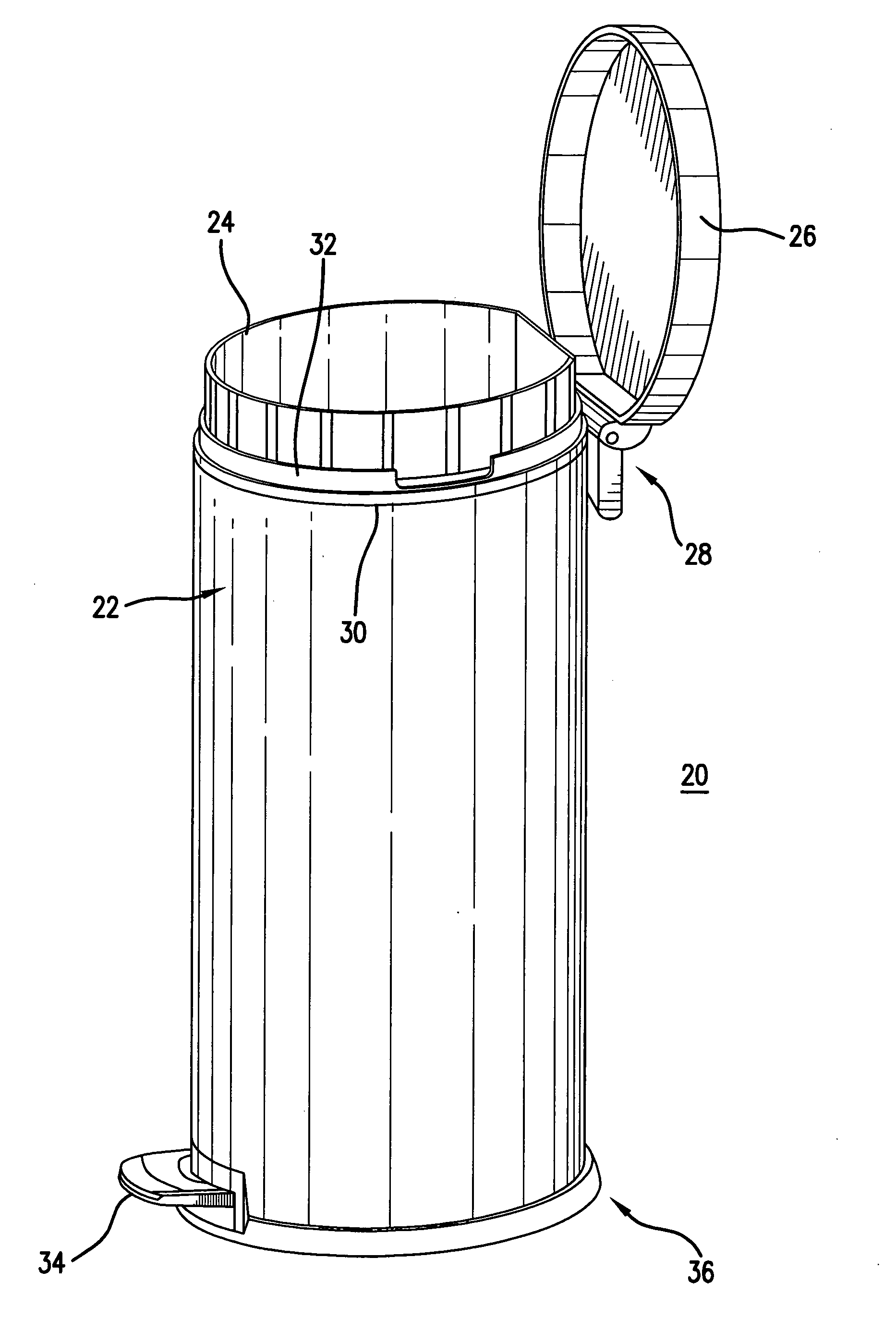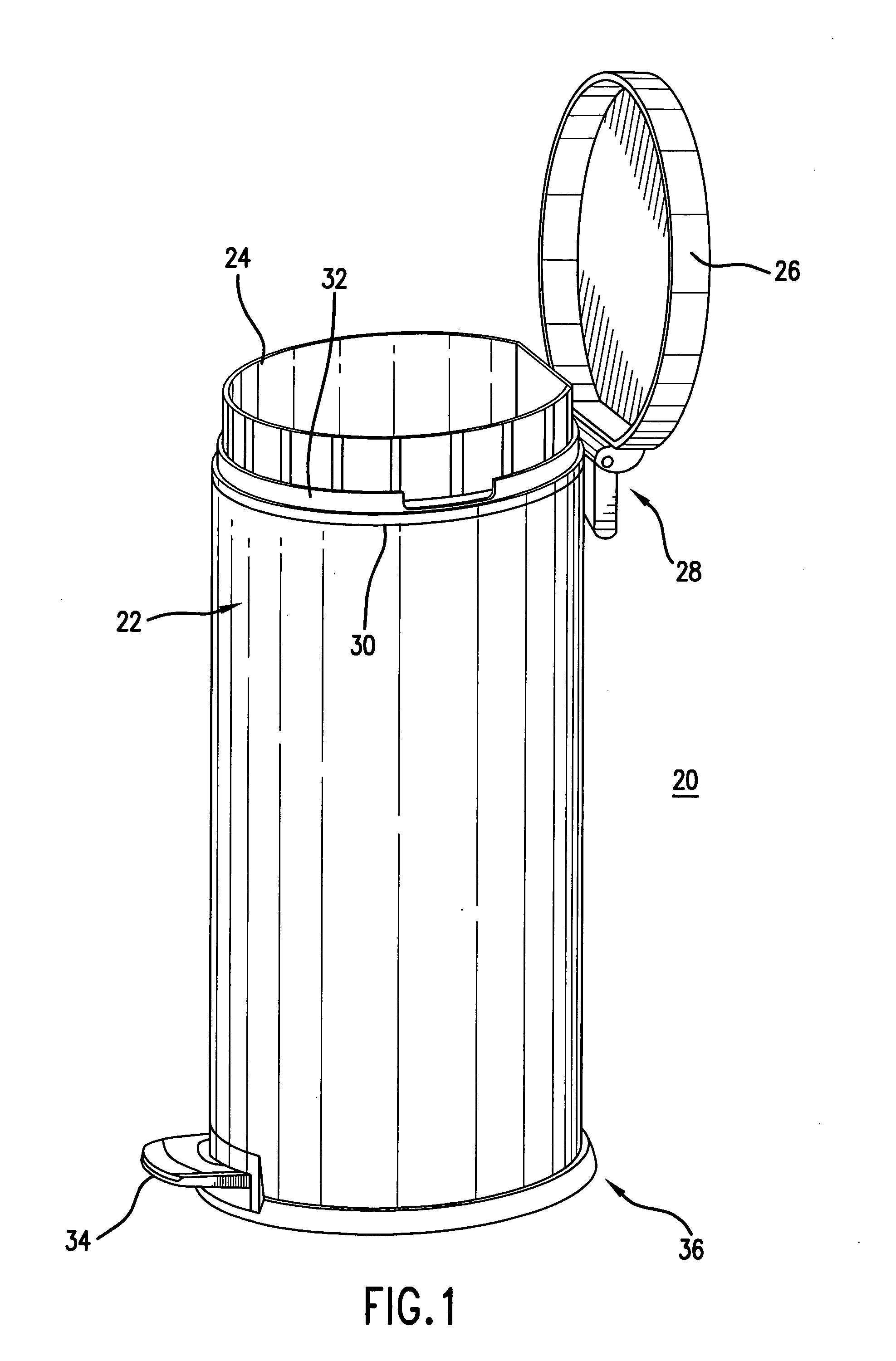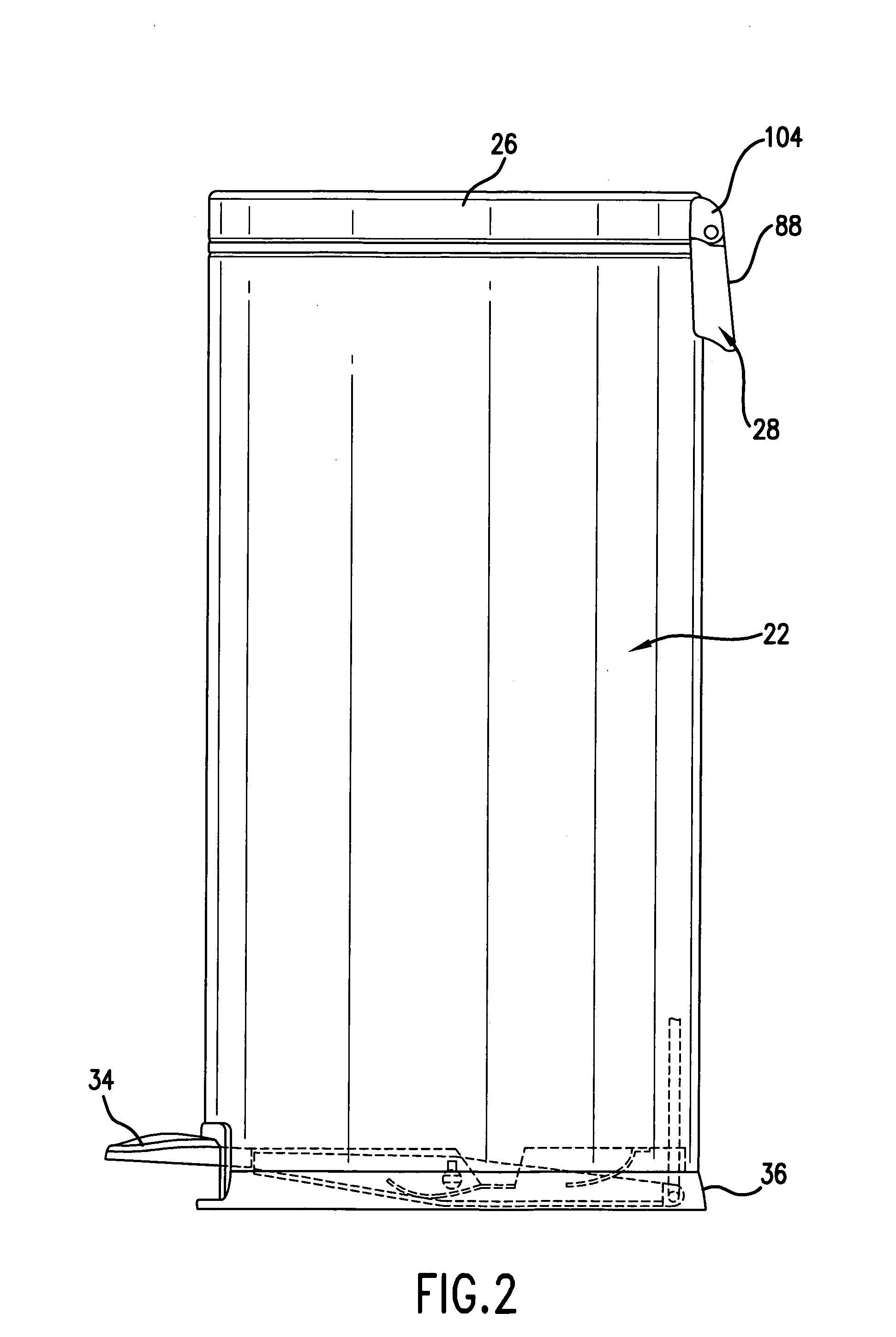Trash can assembly
a technology for trash cans and lids, which is applied in the field of household items, can solve the problems of noisy foot pedals on some of the conventional trash cans, noise from banging noise, and the closing motion of the lid is distorted, so as to reduce the profile, quick and convenient removal and replacement, and the effect of reducing the lid closing motion
- Summary
- Abstract
- Description
- Claims
- Application Information
AI Technical Summary
Benefits of technology
Problems solved by technology
Method used
Image
Examples
Embodiment Construction
[0028]The following detailed description is of the best presently contemplated modes of carrying out the invention. This description is not to be taken in a limiting sense, but is made merely for the purpose of illustrating general principles of embodiments of the invention. The scope of the invention is best defined by the appended claims. In certain instances, detailed descriptions of well-known devices and mechanisms are omitted so as to not obscure the description of the present invention with unnecessary detail.
[0029]FIGS. 1–4 illustrate one embodiment of a trash can assembly 20 according to the present invention. The assembly 20 has an outer shell 22 and an inner liner 24 that is adapted to be retained inside the outer shell 22.
[0030]The outer shell 22 can have any desired configuration, including a circular shape, an oval shape, or a four-sided shape that has four side walls, among others. The inner liner 24 can have the same, or different, shape as the outer shell 22. The li...
PUM
| Property | Measurement | Unit |
|---|---|---|
| thickness | aaaaa | aaaaa |
| gravity | aaaaa | aaaaa |
| closing force | aaaaa | aaaaa |
Abstract
Description
Claims
Application Information
 Login to View More
Login to View More - R&D
- Intellectual Property
- Life Sciences
- Materials
- Tech Scout
- Unparalleled Data Quality
- Higher Quality Content
- 60% Fewer Hallucinations
Browse by: Latest US Patents, China's latest patents, Technical Efficacy Thesaurus, Application Domain, Technology Topic, Popular Technical Reports.
© 2025 PatSnap. All rights reserved.Legal|Privacy policy|Modern Slavery Act Transparency Statement|Sitemap|About US| Contact US: help@patsnap.com



